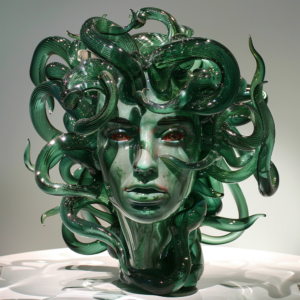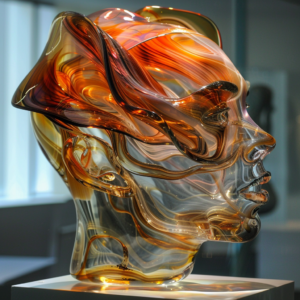The Industrial Revolution, a period of profound technological and social change, left its mark on every aspect of life, including the art of glass sculpting. While glassmaking had existed for millennia, the 18th and 19th centuries witnessed a dramatic transformation in how glass sculptures were produced and used. Let’s explore this fascinating period, examining how the Industrial Revolution revolutionized glass sculpting.
From Furnace to Factory: The Rise of Mechanization
Prior to the Industrial Revolution, glass sculpting was a largely manual craft. Skilled artisans meticulously shaped molten glass using rudimentary tools and techniques. However, the 18th century saw the rise of mechanization, impacting glass sculpting in several ways:
- Mold-Blowing Machines: The invention of mold-blowing machines in the late 18th century allowed for the mass production of more intricate and uniform glass shapes. This technology, particularly beneficial for creating glassware, facilitated faster production and wider availability.
- Improved Furnaces: Advancements in furnace design led to increased efficiency and control over the heating process. This enabled glassblowers to work with larger quantities of molten glass and experiment with new techniques.
- Power Tools and Automation: The introduction of power tools and rudimentary automation in later stages of the Industrial Revolution streamlined certain aspects of glass sculpting, such as polishing and grinding.
Efficiency and Scale: A New Market for Glass
These technological advancements led to several significant changes:
- Increased Production: Mechanization dramatically increased the output of glass sculptures and glassware. This made glass more affordable and accessible to a wider segment of the population.
- Standardization: Mold-blowing machines ensured a level of uniformity that wasn’t possible with traditional hand-blowing techniques. This standardization made mass production more feasible and streamlined.
- New Markets: The increased affordability and availability of glass sculptures opened doors to new markets. Glassware became more commonplace in middle-class homes, and decorative glass pieces found their way into public spaces and businesses.
The Persistence of Artisan Craft
Despite the rise of mechanized production, the art of hand-blown glass sculpting wasn’t entirely replaced:
- Luxury Market: Highly skilled artisans continued to create unique and intricate glass sculptures for the luxury market. These pieces, often commissioned by wealthy patrons, showcased the pinnacle of artistic skill and technical mastery.
- Artistic Expression: For some artists, the limitations of mechanized production were undesirable. They continued to utilize traditional hand-blowing techniques to retain complete creative control and express their unique artistic vision.
New Techniques and Materials
The Industrial Revolution wasn’t just about mechanization; it also saw the introduction of new materials and techniques:
- Chemical Advances: The development of new coloring agents and enamels allowed for a wider range of colors and more intricate decorative details on glass sculptures.
- Glass Etching: The invention of glass etching techniques allowed for the creation of detailed designs and patterns directly onto the glass surface.
- Scientific Glassware: The scientific advancements of the era fueled the demand for specialized glass instruments and laboratory equipment, pushing the boundaries of glassblowing techniques for scientific applications.
Conclusion: A Legacy of Innovation
The Industrial Revolution transformed glass sculpting from a specialized craft to a more accessible art form. While mechanization and mass production made glass more affordable for the masses, the art of hand-blown glass sculpting continued to thrive. The introduction of new techniques and materials further enriched this art form. The legacy of the Industrial Revolution on glass sculpting can be seen in the diverse range of glass pieces we encounter today, from mass-produced drinking glasses to breathtaking museum exhibits showcasing the technical prowess and artistic vision of contemporary glass artists.



